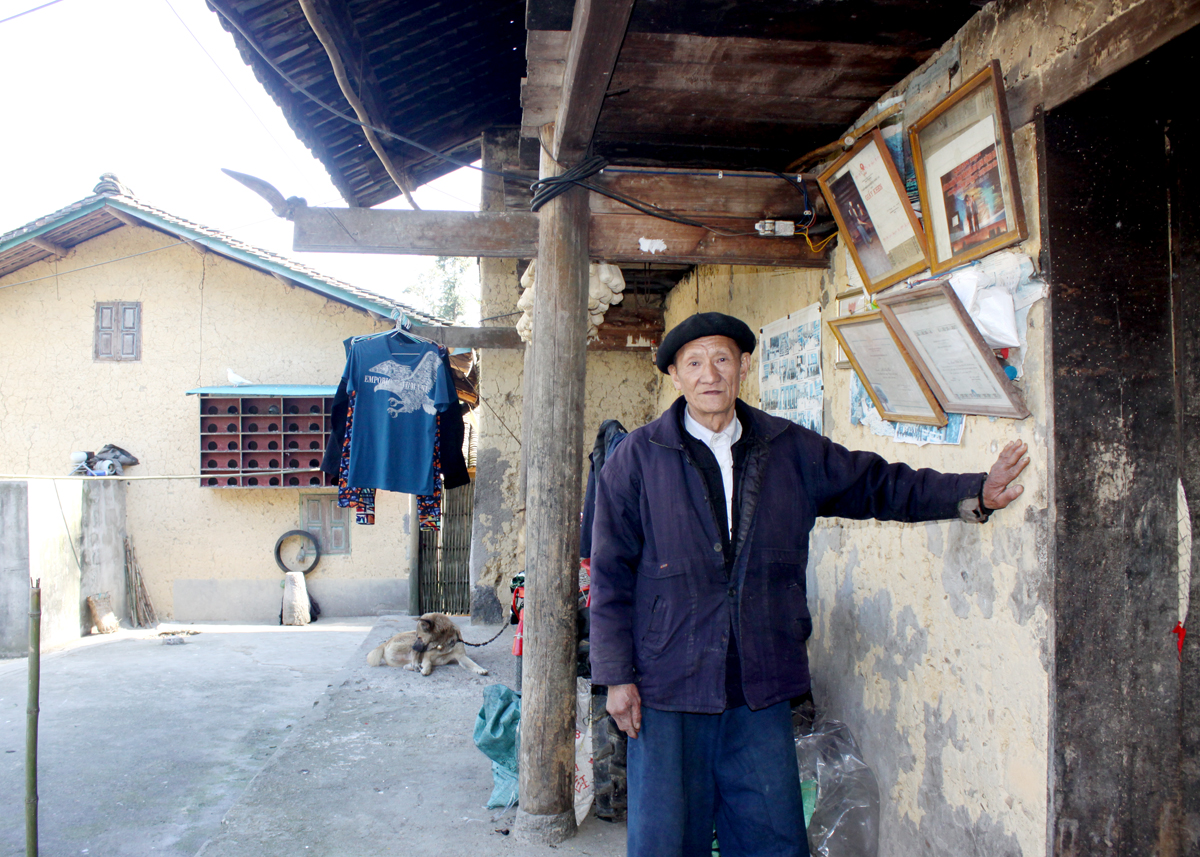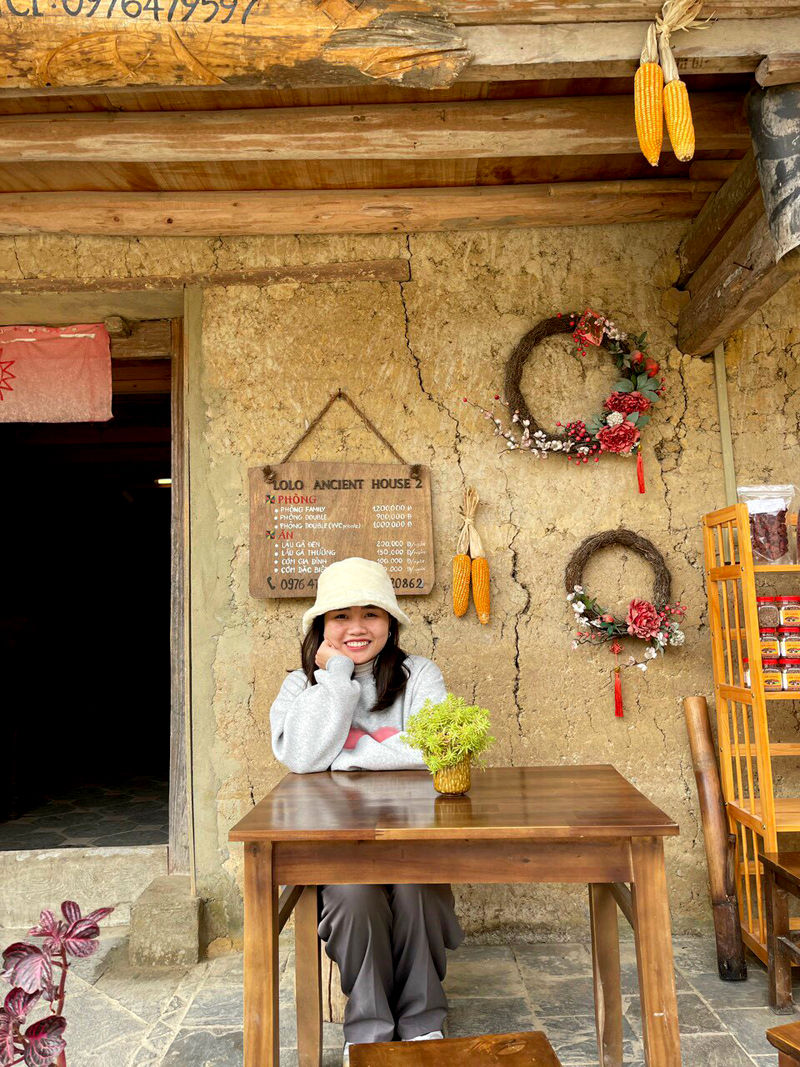Tile roofs, earthen houses - parts of the soul of the Karst Plateau
BHG - Starting from the Mong ethnic cultural village of Pa Vi Ha in Pa Vi Commune (Meo Vac District), we visited places that still preserve the ancient houses on the Ha Giang Karst Plateau. From Meo Vac to Dong Van, Yen Minh, and Quan Ba, it is difficult to admire a Mong village with ‘trinhtuong’ (earthen) houses that have been built traditionally without integrating modern materials.
 |
| Mua Van Sau from Lung Cam Village, Sung Trai Commune (Dong Van District) and his 60-year-old house. |
For a long time, the traditional architecture of the Mong ethnic people has been a unique feature of the Karst Plateau. Throughout the journey to the plateau, visitorsare attracted by the typical stone fences of the Mong ethnic people. When passing through the gate to explore the architecture inside, they are even more surprised by the earthen houses, which are typical features of the rocky mountainous region. From the simple material of red soil, the Mong people have created unique architecture that is both friendly and harmonious with nature. The 40cm thick walls are made entirely of earth, creating a unique highlight for the rocky landscape.
 |
| Tourists enjoy taking photos with the Homtay earthen house in the Ha Giang Karst Plateau. |
Ancient earthen houses in Dong Van can be found in Lung Tao, Van Chai, Pho Cao, and Sung La. In Lung Cam Village, Sung La Commune (Dong Van District), Mua Van Sau is the owner of a 60-year-old earthen house which is still well-preserved with Mong ethnic architecture. Sau said that it took two months to complete the construction of his house. The secret of the construction, which was passed down from his ancestors, is to use salt-mixed-water to mix with the soil, helping the earthen walls to be more solid over time, and not be damaged by termites. Many researchers of Mong earthen constructions believe that there are many other compounds mixed with the soil to create adhesion and durability. There are ancient houses which are over 100 years old in the communes of Sung La and Lung Tao that still retain their solidity, with walls being kept intact on all four sides, perhaps thanks to the secrets that only veteran builders know.
The development of localities and the convenience of modern construction materials, brick walls, and cement roofs have become more popular, so earthen walls and yin-yang tiled roofs have gradually disappeared in Mong villages on the Karst Plateau. The Mong ethnic people's residential architecture is still basically preserved, but the earthen material that brings a harmonious beauty to the overall space is no longer people’s choice. Nowadays, it is almost impossible to find an original Mong village full of earthen houses and yin-yang tiled roofs. The Mong ethnic cultural village in Pa Vi Ha Village (Meo Vac District) was built to replicate the traditional architecture of the Mong ethnic people, but most of the houses there are built with brick and concrete materials, only a few of them are earthen houses.
BHG





READER COMMENTS